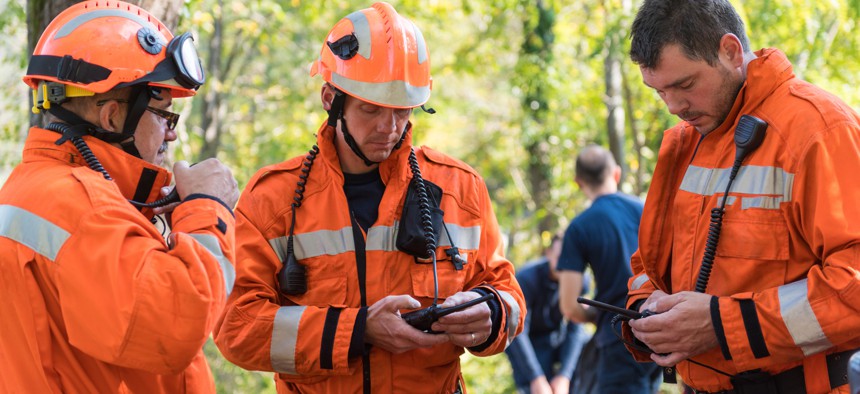What responders really think about communications tech

GettyImages/AlenaPaulus
Easy access to data from an extensive survey of over 7,000 first responders can inform development and deployment of public safety communications technology.
Thanks to the National Institute of Standards and Technology’s Public Safety Communications Research program, responder organizations and device developers can now see how users really feel about communications technology.
With PSCR’s Survey Results and Survey Analyzer tools, public safety officials can sift through the results of a large-scale survey of 7,000 first responders who shared their views on existing and emerging public safety communications technology – from radios and smartphones to bodycams, virtual reality and fingerprint scanners.
The Survey Results tool allows users to filter survey results by discipline (law enforcement or EMS, for example), jurisdiction and public or private/volunteer organization. Other demographic subgroups include the respondents' role, age, experience and gender.
The Survey Analyzer takes the data one step further, enabling viewers to dynamically create informational graphics based on their selections. From selected data, the analyzer can dynamically generate charts and data tables, which can be exported into PDF and PNG formats with the click of a button.
For example, if the user were to select a topic like radio vehicle devices and break it down by role, a comparison of the bar charts would show that 55% of respondents in chief or management roles said they use these devices frequently, whereas only 20% of supervising and frontline responders echoed that sentiment.
Any combination of variables would allow public safety agencies to quickly and easily identify where their own unit’s technology is ahead of their counterparts and where they must invest to be on par with the rest of the country.
Quotes from these interviews are also available and sortable by user role, age and experience as well as by topic, from frustrations and technology problems, to training to wish lists.
The survey results, including the quotes, can be “used to influence the research, design and development of communication technology in the public safety domain,” the PSCR Usability Results website reads.
"Our goal was to improve communication technology for first responders; but you can’t improve it if you don’t know their experiences," Shanee Dawkins, a computer scientist with NIST's Visualization and Usability Group, told PSCR’s communications team. "The first step in all of our research was to understand the user, their context of use, and their needs in order to build their requirements.
While there's been a push to get responders the technology they need, "our focus had been on understanding experiences with technology from first responders themselves," said Kerrianne Buchanan, a Social Scientist with the usability group. "We ended up finding that some non-technical aspects, like the price of devices, have huge implications for what first responders are able to use. So many of our findings make intuitive sense and resonate with first responders’ experiences, and now it’s great to have the empirical data to back up those viewpoints."
“People want to see the concrete data to support their management decisions and research, and we have that to share,” NIST Human Factors Scientist Yee-Yin Choong said. “We employed a multi-phase approach with both qualitative and quantitative components to truly provide data-driven insights, so it’s not just based in theory.”
NEXT STORY: Pittsburgh Bridge Collapses Ahead of Biden Visit





